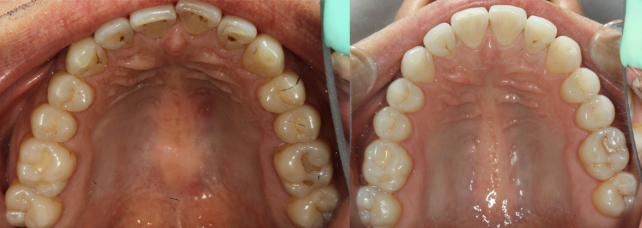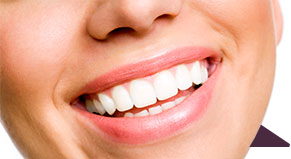Invisalign Lisp: Does it Happen and Will it Go Away?
October 27th, 2016
 For teens and adults considering Invisalign, the nearly invisible aligner treatment is a big draw. But the fear of developing a lisp is enough to make many people reconsider. After all, what’s the point of investing in invisible orthodontic work if one of the potential side effects would quickly reveal the secret?
For teens and adults considering Invisalign, the nearly invisible aligner treatment is a big draw. But the fear of developing a lisp is enough to make many people reconsider. After all, what’s the point of investing in invisible orthodontic work if one of the potential side effects would quickly reveal the secret?
The good news for patients considering Invisalign treatments is that not everyone experiences a lisp, and in many cases, it’s extremely minor. Even those who experience more distinct lisps usually adjust quickly to resume normal speech, so the potential for a temporary speech difficulty shouldn’t be a deterrent when considering treatment.
Why do Some Invisalign Patients Experience Lisps?
A lisp is a speech defect that causes the –s and –z sounds to be pronounced “th.” Lisps are caused by improper tongue placement inside the mouth when speaking, which affects airflow and makes certain words sound different when spoken.
Some Invisalign patients, as well as patients with traditional braces, develop lisps because the aligners alter the space within the mouth. They also cause the tongue to move differently around the teeth, which can affect pronunciation. Invisalign aligners are made of very thin plastic, so the changes and effects are usually minimal. But some people may take longer to adjust.
Lisps due to Invisalign may also be caused ill-fitting Invisalign trays. Each tray is a clear plastic mold designed to fit snugly over the teeth, but because the goal is to change the tooth positioning, the molds are made to fit the desired tooth positioning for the end of that phase of treatment.
Typically, Invisalign patients do not develop lisps with each new set of aligners because they are similar enough in shape and thickness. But if a tray isn’t shaped quite right or is improperly placed, it can cause a lisp. This is why it’s important to receive Invisalign treatment from skilled and experienced dentists, like Dr. Aneszko and Dr. Stino.
How Long Will It Last?
Every patient is different, but in general, any lisp due to Invisalign will go away after no more than a few weeks. Some people even adjust within a few hours! If a lisp occurs, it will fade and eventually disappear as the tongue get accustomed to the aligners and adjusts accordingly.
How to Prevent or Fix Invisalign Lisps
To prevent or fix a lisp due to Invisalign, keep talking! For someone with a lisp, the first instinct may be to talk less to hide the defect. But talking will actually help fix the issue sooner. Because the lisp is caused when the tongue adjusts to the orthodontia, the more a person talks, the more quickly the tongue will be able to learn how to maneuver around the aligners to form sounds, and the more quickly speech will return to normal.
To avoid speaking with a lisp at a major event or during an important meeting or phone call, just remove the aligners for that specific time. Unlike other dental work, Invisalign can be removed temporarily during treatment. The aligners must come out while eating, and they can also be taken out at other times as needed. (Just make sure to consistently wear them 20-22 hours a day to achieve results!)
If the lisp develops after beginning Invisalign treatment and doesn’t go away within a few weeks, contact the prescribing dentist or orthodontist. It’s normal to have a slight lisp during the adjustment period as the mouth and tongue re-learn how to make the proper shapes for each sound while wearing the aligners. If the issue is ongoing, however, there could be a problem with the fit or placement of the mold.
Interested in learning more about Invisalign? Contact Water Tower Dental Care today! We are Invisalign experts and would love to put you on a path to straighter teeth.

 When it comes to your social and professional life,
When it comes to your social and professional life, 
 The last thing you want is yellow teeth after years of wearing braces. But unfortunately, it’s a very common occurrence. If you don’t take care of your mouth while you’re wearing braces, you might be surprised to see white squares where your braces were on yellow-stained teeth after your dentist removes them. Thankfully, it’s easy to avoid this experience. Here are some reasons why people get yellow teeth after braces and how to prevent this from happening. We’ll also talk about how you can fix stained teeth after braces.
The last thing you want is yellow teeth after years of wearing braces. But unfortunately, it’s a very common occurrence. If you don’t take care of your mouth while you’re wearing braces, you might be surprised to see white squares where your braces were on yellow-stained teeth after your dentist removes them. Thankfully, it’s easy to avoid this experience. Here are some reasons why people get yellow teeth after braces and how to prevent this from happening. We’ll also talk about how you can fix stained teeth after braces. Having an underbite is no fun. Not only does can it look strange, but it may also cause serious health issues. Back in the day, the only way to fix underbites was with surgery, braces or expanders. Thankfully, there are less invasive and revealing ways to deal with underbites nowadays. We’re here to tell you how
Having an underbite is no fun. Not only does can it look strange, but it may also cause serious health issues. Back in the day, the only way to fix underbites was with surgery, braces or expanders. Thankfully, there are less invasive and revealing ways to deal with underbites nowadays. We’re here to tell you how 

 Water Tower Dental Care recommends Invisalign for adults with crooked teeth. Unlike regular, metal braces, Invisalign are practically invisible to the human eye. These clear braces are made through a 3D modeling process that fits specifically to your teeth, each set slightly straighter than the previous ones.
Water Tower Dental Care recommends Invisalign for adults with crooked teeth. Unlike regular, metal braces, Invisalign are practically invisible to the human eye. These clear braces are made through a 3D modeling process that fits specifically to your teeth, each set slightly straighter than the previous ones.
 Invisalign Food Restrictions
Invisalign Food Restrictions




 Website Powered by Sesame 24-7™
Website Powered by Sesame 24-7™